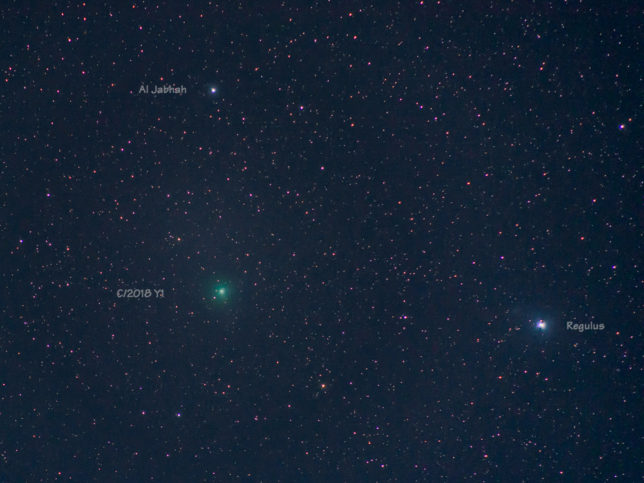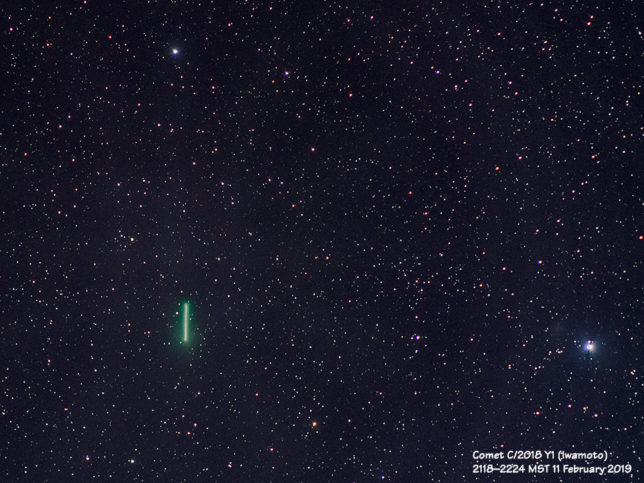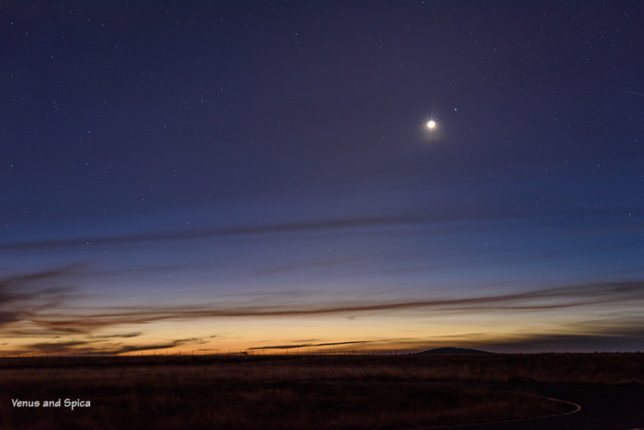A recently discovered comet is now shining brightly in the morning sky. Comet C/2020 F3 (NEOWISE) was first spotted March 27, 2020, by NASA’s NEOWISE space-borne telescope. The comet passed inside Mercury’s orbit on 03 July 2020 and quickly brightened as it as heated by the intensity of the Sun.
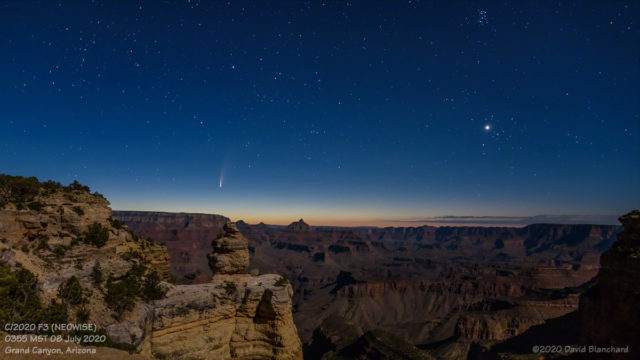
The comet has been rising around the start of Astronomical Twilight when the eastern horizon is just beginning to brighten. Within about 45 minutes to an hour—or shortly after the start of Nautical Twilight—the morning sky has become bright enough to make observation difficult.
The image above was taken as the comet rose above Grand Canyon. Also visible in the image are the planet Venus, the bright star Aldebaran, and the Hyades and Pleiades star clusters.
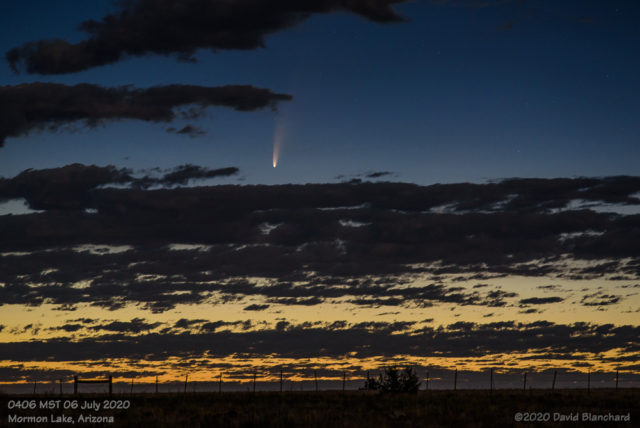
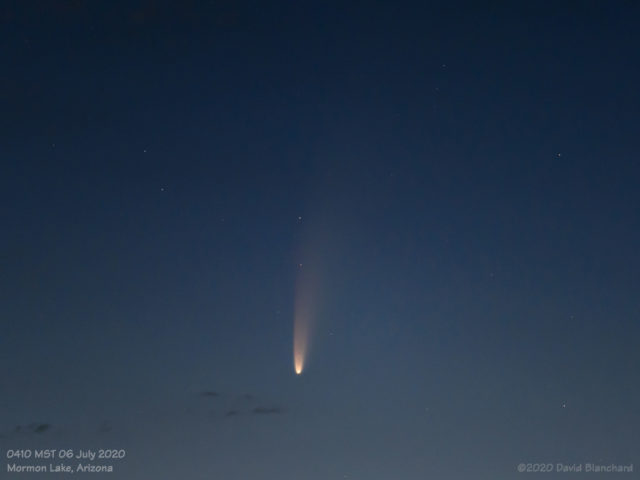
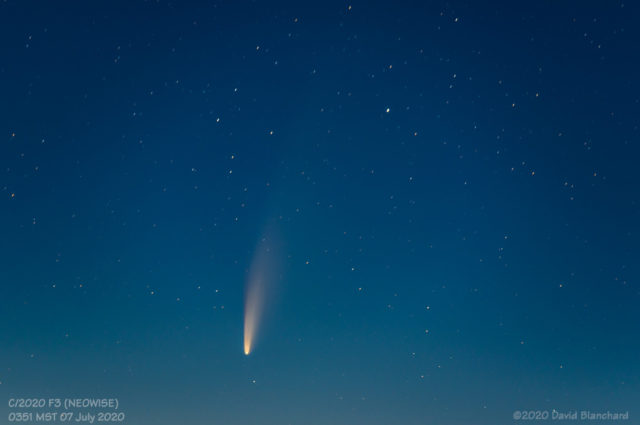
By the third week middle of July the comet will shift from the morning sky into the evening twilight sky. Again, there will be a short window of time in which it is easily observed but viewing the evening is far easier than the morning.
